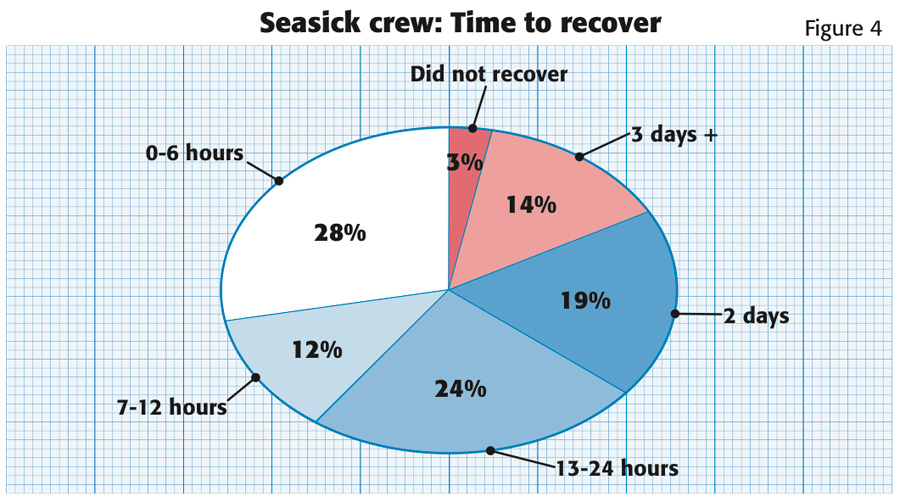In one of the largest ever studies into seasickness, we look at remedies and how well they work
It was conducted with Challenge Business during the penultimate leg of their 2004/5 race from Boston to La Rochelle. The aim was to find out how many crews suffered and how they treated it. It was published in the October 2005 issue of Yachting World.
This seasickness survey is unique in several respects. Firstly, it comprises a very large sample size of 223 crew: those who had already completed a full circumnavigation of over 27,000 miles in all conditions, as well as crew who had joined for just one leg of the race – so-called ‘leggers’.
Secondly, the majority of the Challenge crews had no knowledge of a predisposition to seasickness prior to race training and were allocated to boats on account of other criteria, so the results in this case could be considered a true reflection of susceptibility among the population at large.
Click here to find out how to treat seasickness.
Click here to read tips on how to prevent seasickness.
Who gets seasick?
The majority of crewmembers surveyed suffered from seasickness – 62 per cent had experienced seasickness at some stage, compared with 38 per cent who had never been seasick. The total was fairly evenly distributed among boats; however, on one yacht, 14 of the 15 core crew listed and 13 out of 16 leggers, had experienced seasickness.
The results may suggest that the incidence of seasickness decreases with age. The percentage of seasick crew declined markedly after a peak between
the ages of 20 and 24 (as shown below). Given that a majority of
Challenge crews have had nearly an identical duration and experience of
seagoing, this does seem a significant statistic.

More of the women in our survey had been seasick than men – 73 per cent of women compared to 62 per cent of men (see graph below).

However, when considering this figure one needs to bear in mind a possible age factor, as there was a much greater concentration of women crew aged under 40 than of men – 75 per cent of women compared with 42 per cent of men.
The occurrence of seasickness varied from leg to leg and, as you might expect, was less common on the mainly downwind legs. Yet the worst leg for seasickness was the first from Portsmouth to Buenos Aires, when 55 per cent of those surveyed were seasick.
The incidence dropped on subsequent legs – except for leggers. Perhaps because they experienced the same effects of excitement, apprehension and inexperience of coping with seasickness as had all the crews on the first leg. In fact, the five crewmembers who did not recover from seasickness were all leggers. This all suggests, as some of the yachts’ medics commented, that crews’ ability to resist nausea and recover from it improved as the race went on.
That said, it was a surprise to see how commonly seasickness recurred during a leg, presumably after a period of calms or in renewed bad weather. Some 47 per cent who got over their initial seasickness had experienced it again.
How badly were crews seasick?
From our total sample, we can see that 84 per cent of crews,
including those who experienced nausea and vomiting, were able to carry
on working. However, 16 per cent reported such severe vomiting and dry-
retching that they were not able to stand a watch (see graph below). Severe
sufferers were not evenly distributed among the yachts. On several
boats no one fell into this category, yet on another yacht six core crew
(out of 18) were taken out of the watch system at some point. It is
possible this was bad luck, but equally we might be seeing the role that
treatment, routine on board and even psychology were playing.

The possibility of a yacht treatment ‘culture’ that affects extreme seasickness is suggested in a similar pattern among leggers on these
same boats. We have seen how much more vulnerable leggers were to
seasickness, yet on the boat on which everyone could continue working,
so could the leggers, while on the yachts on which there were several
badly seasick core crew there were also badly seasick leggers.
How long did it take to recover?
The good news is that all but a few leggers recovered from seasickness in the end and even the worst affected got over seasickness in three to five days.





